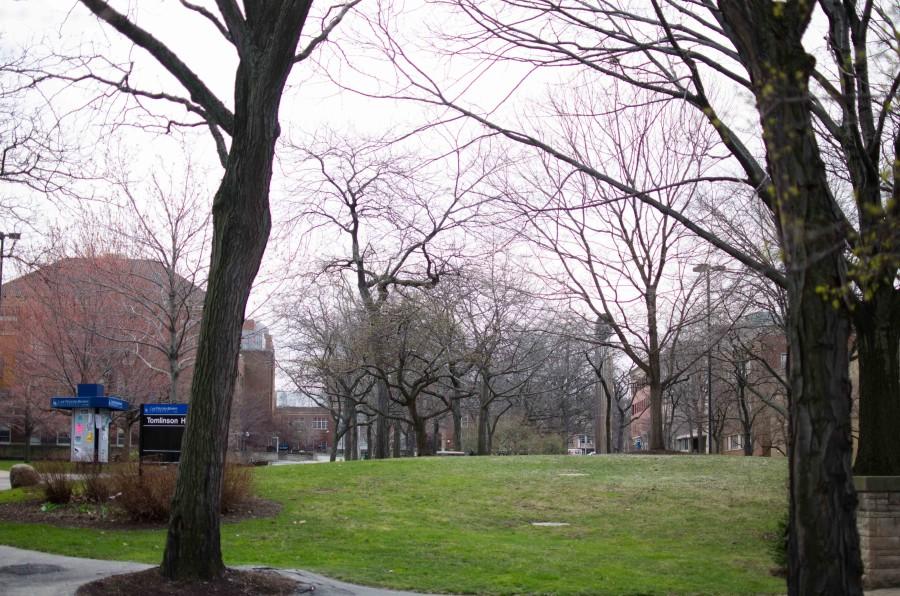A more winter-friendly landscape
During the winter months, our campus looks like a desolate wasteland filled with brown, dead-looking deciduous trees and plants. This is super depressing and we need to do something about it.
The obvious and straightforward solution to this is to plant more coniferous trees around campus. This will ensure campus greenery and colorful accents during the depressing months of the year, i.e. most of the school year in Cleveland.
Imagine walking to class on a cold January morning with your head bowed against the freezing, awful lake-effect wind. You’re surrounded by brown grass, grey asphalt and patches of dirty snow, but then something green catches your eye. Green? In the middle of winter? With a sudden burst of joy, you realize it’s a beautiful coniferous tree, a reminder that life continues even in the darkest depths of Cleveland winters.
In addition to boosting campus morale and improving aesthetics, we could also use the coniferous trees for fun activities, such as tree-decorating contests between all the residence halls. Each residence hall would decorate their respective assigned coniferous trees in a creative way. A collection of campus celebrities would judge the trees. This competition of course is not limited to Christmas decorations; people should be encouraged to think beyond the possible and decorate their trees in innovative ways.
We propose planting a collection of firs, spruces and pines, which would provide a pleasing diversity of conifers throughout campus. The American arborvitae is an evergreen hedge that starts at $60 for a five-foot tree. Combine this with 12-foot white pines for $150 and you’ve got yourself a great coniferous starter kit. Using the funds from one student’s yearly tuition, the university could plant almost 300 trees and 300 hedges, providing more than enough greenery throughout campus.
Finally, we are fairly confident there are studies floating around the internet that prove that living plants boost morale. If there haven’t been any studies done regarding this subject, then perhaps a research grant could finance the new trees and then we could take surveys of students’ morale levels before and after the trees are planted.
Once these improvements are in place, we propose planting large perennial, flowering bushes to provide even more vibrancy year round throughout an otherwise dreary Cleveland. Finally, bark nugget mulch would take our campus landscaping to a new level of greatness.
Cleveland winters tend to suck a lot. But they can be a little brighter with these simple landscaping improvements and alterations.
Heather O’Keeffe and Natalie Worden are fourth-year students.


